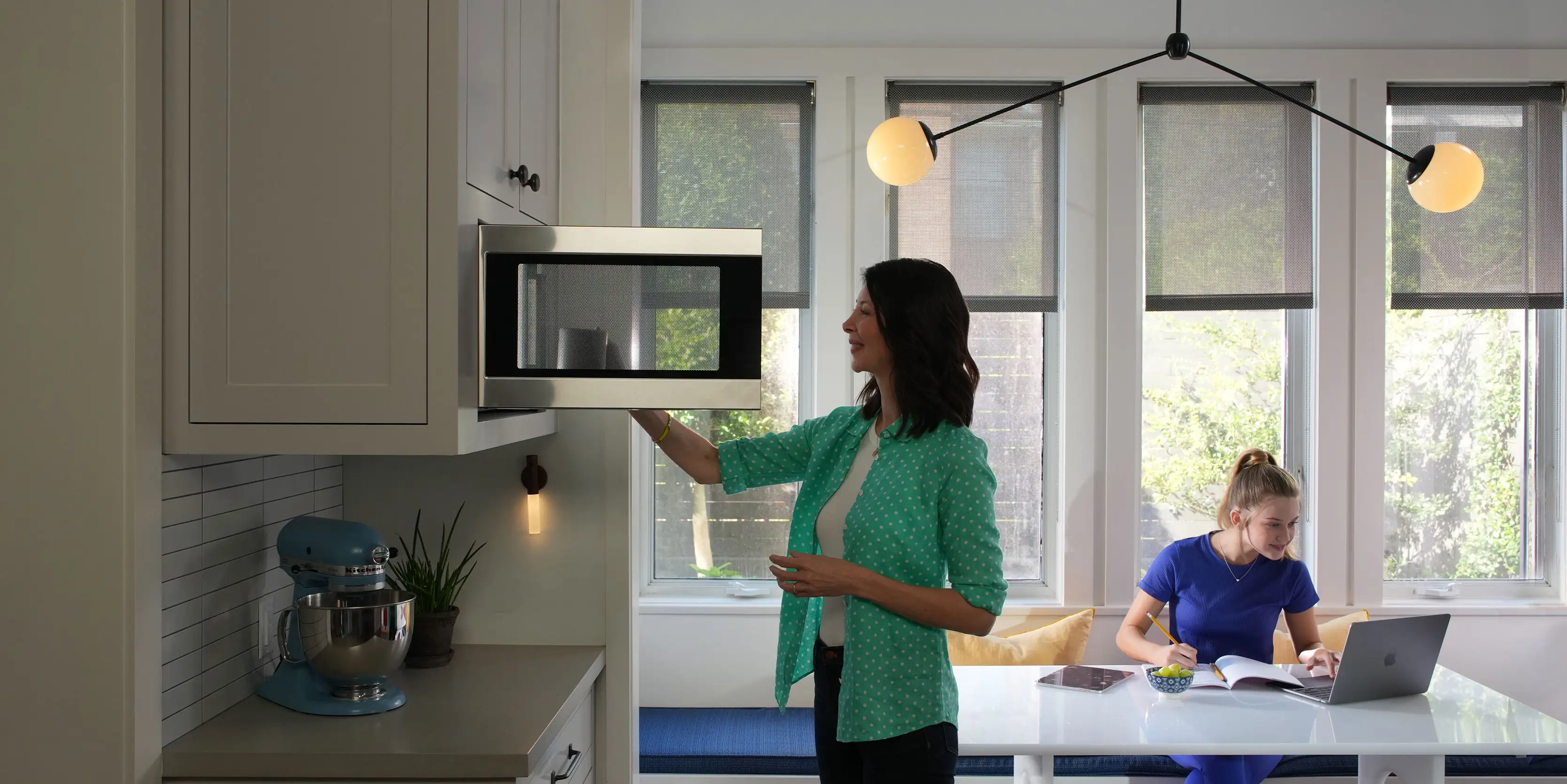


Wondering how you can save energy at home? You've come to the right place.


Wondering how you can save energy at home? You've come to the right place.
This resource lists devices and appliances that use the most energy, then covers some easy ways for you to save on electricity costs. Don't worry, transforming your home into a lean, mean, energy-efficient machine may be / can be easier than you realize. With a few quick fixes and some small changes to daily habits, you'll be prepared to conserve energy and save money.
Let’s start with what uses the most electricity in your home — the air conditioner and heater. Heating and cooling account for a whopping 32.1% of your home’s electricity consumption. Using a programmable thermostat, setting your thermostat fan to “auto” and getting routine HVAC inspections can all help reduce the amount of energy used.
Another 22.7% of energy consumption comes from your water heater, lights and refrigerator. Is your water heater set to the Department of Energy recommended temperature of 120°? Do you sometimes forget to turn off the lights when you leave? Do you often stand in front of an open fridge? If so, you could be wasting energy and your hard-earned money. Consider this: 25% energy consumption is the same as 25% of your electricity bill. Thinking about energy in tangible, monetary terms can help you become more energy efficient in your daily life.
Source: U.S. Energy Information Administration Annual Energy Outlook 2022, Table 4, March 2023
For a more in-depth understanding of how your home uses energy, check out the chart below. Many devices continue to draw small amounts of electricity even when they aren’t in use. Although these appliances and devices may not require much power individually, collectively they can suck tons of energy out of your home — costing you money. By making sure that these items are completely turned off when not in use, you can greatly increase your home’s energy efficiency. Furthermore, be mindful of how much energy different items use. Maybe next time, avoid the hair dryer and use a towel. Even little changes like this will deliver amazing results over time.
Appliance / Device |
Power Consumption (W) |
Annual Consumption (kWh/yr) |
Annual Cost | Savings with 50% < Consumption |
||
|---|---|---|---|---|---|---|
On |
Idle |
Off |
||||
Electronics |
||||||
| Digital TVs, ED/HD TC, >40" | 234 | 6 | 0 | 455 | $43.68 | $21.84 |
| Analog TVs, >40" | 156 | 0 | 0 | 312 | $29.95 | $14.98 |
| Digital TVs, ED/HD TC, <40" | 150 | 6 | 0 | 301 | $28.90 | $14.45 |
| Analog TVs, <40" | 86 | 12 | 0 | 184 | $17.66 | $8.83 |
| Desktop PCs | 75 | 4 | 2 | 237 | $22.75 | $11.38 |
| Set-top boxes | 20 | 0 | 20 | 178 | $17.09 | $8.54 |
| Stereo systems | 33 | 30 | 3 | 119 | $11.42 | $5.71 |
| Desktop monitors | 84 | 2 | 0 | 167 | $8.20 | $4.10 |
| DVD/VCR | 17 | 13 | 3 | 78 | $7.49 | $3.74 |
| Notebook PCs | 25 | 2 | 2 | 72 | $6.91 | $3.46 |
| Video game systems | 36 | 36 | 1 | 41 | $3.94 | $1.97 |
Lighting |
||||||
| Torchiere lamp-halogen | 300 | 0 | 0 | 440 | $42.05 | $21.02 |
| 100-W incandescent lamp | 100 | 0 | 0 | 70 | $6.45 | $3.22 |
| 60-W incandescent lamp | 60 | 0 | 0 | 40 | $3.87 | $1.93 |
| 18-W compact fluorescent | 18 | 0 | 0 | 20 | $2.06 | $1.03 |
Micellaneous |
||||||
| Dehumidifier | 600 | 0 | 0 | 970 | $93.31 | $46.66 |
| Space heater | 1,320 | 1 | 0 | 314 | $30.13 | $15.07 |
| Ceiling fan | 36 | 0 | 0 | 81 | $7.80 | $3.90 |
| Coffee maker | 1,000 | 70 | 0 | 58 | $5.60 | $2.80 |
| Rechargeable power tool | 13 | 4 | 0 | 38 | $3.60 | $1.80 |
| Hair dryer | 710 | 0 | 0 | 40 | $3.40 | $1.70 |
| Lawn sprinkler | 11 | 0 | 0 | 32 | $3.10 | $1.55 |
Totals |
5,083 | 198 | 31 | 4,247 | $399.36 | $199.68 |
Source: U.S. Department of Energy 2011 Buildings Energy Data Book, Section 2.1.16
Always-on devices and appliances are those that use electricity even when they’re not in active use. This type of energy usage goes by several names, including “idle load,” “baseload” and even “vampire power," because they suck electricity (and money from your wallet) by simply being plugged in. For example, if you put your computer on standby or sleep mode, or turn your TV off, they’re still drawing small amounts of power. That’s how they’re able to boot up or turn on so quickly.



Track your usage anytime, anywhere with the Reliant app. Plus, sign up for our Weekly Summary Email.
Google Nest and Google Nest Learning Thermostat are trademarks of Google, LLC.
Sources:
Natural Resources Defense Council, Home Idle Load: Devices Wasting Huge Amounts of Electricity When Not in Active use - Issue Paper (PDF)
Lawrence Berkeley National Laboratory, Standby Power Summary Table
U.S. Department of Energy, Warding Off Energy Vampires and Phantom Loads